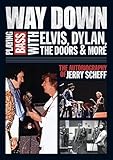Michael Cala
Michael Cala has been writing and photographing professionally for most of his adult life. For the past 10, he has been a writer-producer and photographer for Internet content and multimedia for ad agencies, nonprofits, and a major New York City medical center. He also co-produces traditional music concerts.
He studied American and Latin American literature while in college and speaks fluent Spanish as well as his family's native Sicilian dialect. Mr.Cala has written extensively about the history, music, and popular culture of 19th and 20th century America.
Mr. Cala has been a hospital media director and has freelanced as a health and medical writer for magazines and corporate clients since 1990, specializing in video scripting and multimedia. He has written book, music, and concert reviews for Blues Revue and SING OUT! magazines. He now writes for the new Blues Music Magazine as well as for the traditional music site No Depression.
He has also written about art photography and photographic technique for Camera 35, Photo, and Modern Photography.
Mr. Cala is researching the lives of African American composer Perry Bradford and blues/cabaret singer Mamie Smith for a book on the birth and development of the “race record” industry starting in 1920. In 2013-2014, he and his wife Anne raised funds to buy Mamie Smith a headstone—she lay buried in unmarked ground for 68 years—and to establish a cemetery maintenance fund in her name.
Mr. Cala was recently inducted into the New York Blues Hall of Fame for his work as a blues and traditional music writer.














